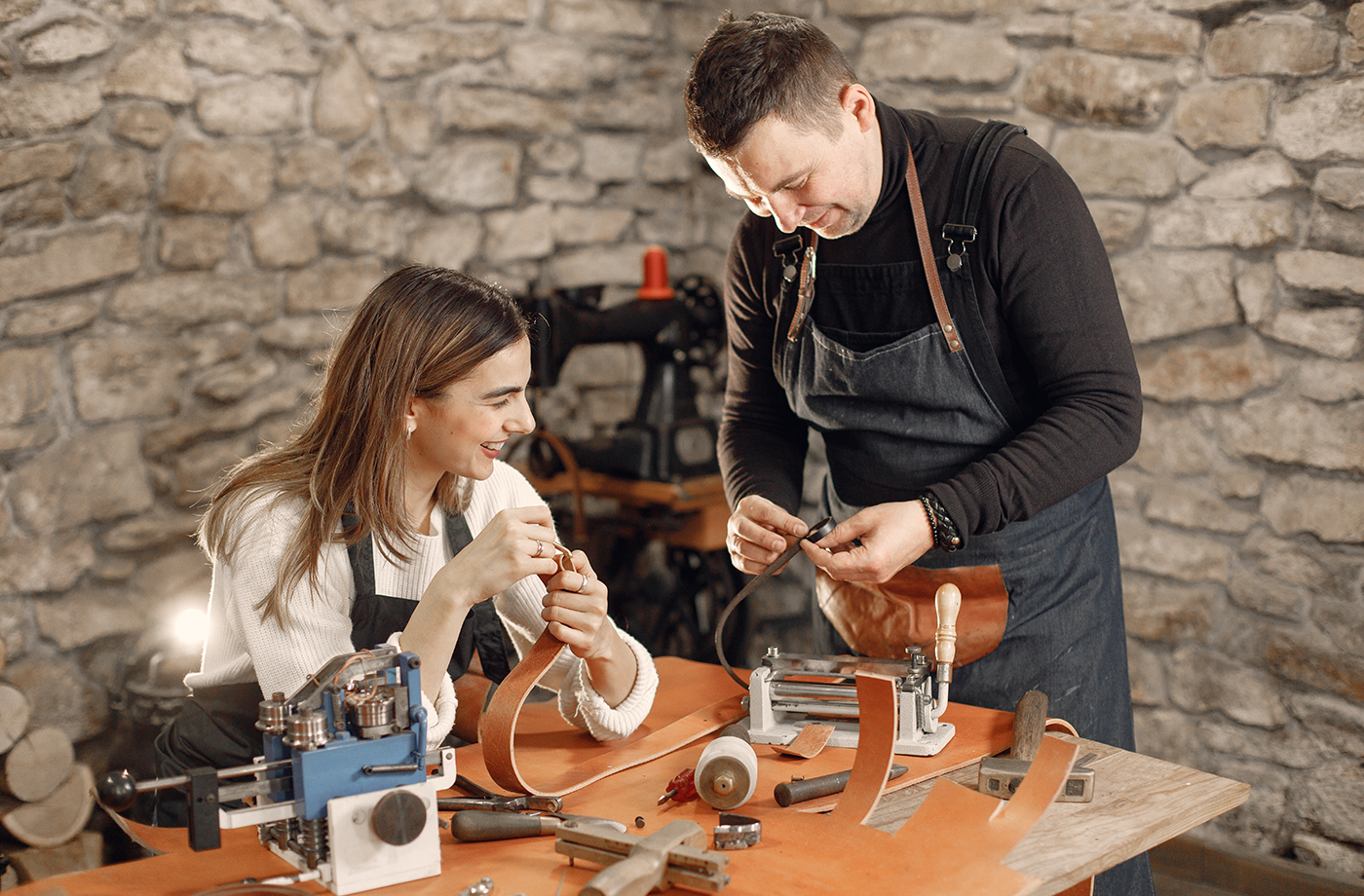In these regions, the long-standing saying "there is work for those who want to work" has commonly reflected a specific mentality and approach to professional engagement. This phrase is often used sarcastically in descriptions of videos and memes on social media that portray seemingly trivial jobs, such as a professional wedding guest, panda hugger, or queue guard. Surprisingly, some markets have demand and supply for these jobs.
However, this saying only applies to traditional crafts, which are gradually disappearing in Serbia, such as watchmakers, tanners, cobblers, jewellery makers, and leatherworkers. Despite the availability of jobs, fewer people want and know how to perform these crafts.
On this note, I was surprised to learn that only a few candidates enrolled in the leather accessories craft direction in Belgrade this year. Only three students applied and were redirected to other profiles because their number was insufficient to form a class for leather artisans at the Technical School for Leather Design.
The extinction of crafts is a significant and rapidly growing problem in Serbia and globally. According to UNESCO, 60% of traditional crafts worldwide have disappeared in the last 100 years! In Serbia, over 300 crafts vanished during the same period, including artisans for conventional costumes, footwear, jewellery, pottery, and other items.
Imagine suddenly losing 300 different products and services that were once considered commonplace. Specifically, according to statistics, the number of artisans in Serbia has decreased by about 40% in the last ten years. Today, it is estimated that there are less than 15,000 active artisanal workshops in Serbia, whereas there were over 25,000 twenty years ago.
According to the Statistical Office of the Republic of Serbia, the value of artisanal product production was around €320 million in 2000, while in 2019, the last year for which official data is available, the value was around €270 million.
If this trend continues, there might soon be no one to repair our watches, add an extra hole to our belts if we gain weight, or mend our favourite heels. Today, we solve this problem by discarding or throwing away old things and deciding to buy new ones. Consumer society teaches us that everything is replaceable, and there's no reason to fix or preserve old things.
The main reasons for the accelerated extinction of traditional crafts are manifold. On the one hand, there is a perception that crafts are outdated, that it's a profession of the past and cannot bring enough profit.
However, this is not true because there is still a growing global demand for authentic, handmade items. In the globalization and mass production era, uniqueness and originality offered by traditional crafts are increasingly valued. Despite the dominance of large commercial brands whose products are mass-replicated, people still strive to find and own something different and authentic.
Craft items provide the uniqueness lacking in a society where everyone looks alike and wears the same pieces of clothing and footwear. Traditional crafts allow style and taste to be expressed initially.
On the other hand, a significant problem is that fewer young people want to continue family craft traditions, often passed down through generations within the same families. This is because modern industries, such as the IT sector, attract young people with promises of high salaries and prestigious jobs.
Although there are constant announcements of layoffs in the IT sector on radio and television, immediately after that, there is an advertisement for another new IT academy that guarantees a job and a bright future for every student after completing expensive courses. Despite the increasingly uncertain outlook, attractive marketing campaigns continue to lure young people into the IT industry. Under the influence of these factors, young people are less likely to continue their ancestors' traditions.
Media constantly deliver news about incredible technological progress and the development of artificial intelligence, which logically leads to the neglect and forgetting of traditional crafts.
Meanwhile, few people mention goldsmithing, leathercraft, or shoemaking as a good opportunity for earnings and tradition preservation. Although we are inundated with stories about artificial intelligence and the bright future of digitization, the importance of balance in the economy should be addressed. Traditional crafts still have their invaluable value and beauty.
Instead of becoming extinct, they could shine again as a desirable and lucrative profession with some promotion and support. In such an environment, it is necessary to promote and encourage young people's awareness and desire to modernize crafts and adapt them to the new era while retaining the essence of quality craftsmanship, combining the traditional and the modern.
This does not mean that a mass of young people should be directed towards crafts; on the contrary, it is necessary to nurture the development of individual talents and skills in line with the real needs of the job market. When everyone rushes towards the same goal, the market becomes oversaturated, and the quality of the workforce declines, as is precisely the case in the IT industry with this approach. Education should nurture creativity and innovation, not print moulds.
Crafts are more than just an ordinary profession - they represent an essential part of our culture, tradition, and identity. Their disappearance would mean losing a part of ourselves and our roots. Preserving these professions is crucial for developing tourism in Serbia because tourists want to experience authentic workshops and products.
Although there is indeed work for those who want to work today, at this pace, this won't be the case for traditional crafts, whose flame is slowly but surely fading.
Crafts are so negatively portrayed, forgotten, and underestimated that their disappearance is almost inevitable unless something structurally changes our society, consciousness, and economy. Robust and comprehensive awareness, promotion, and support are needed to rekindle this flame.
It is necessary to change or at least influence the perception of the value of traditional crafts and provide them with adequate support because their survival is crucial for preserving national identity and developing a sustainable economy.



